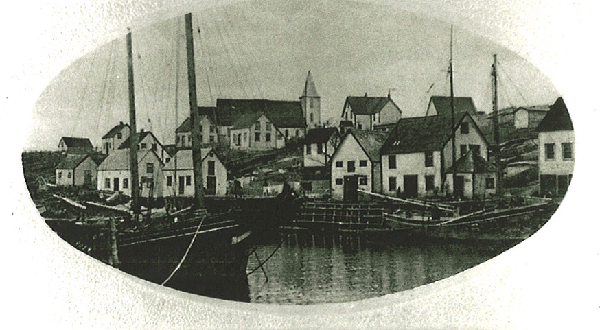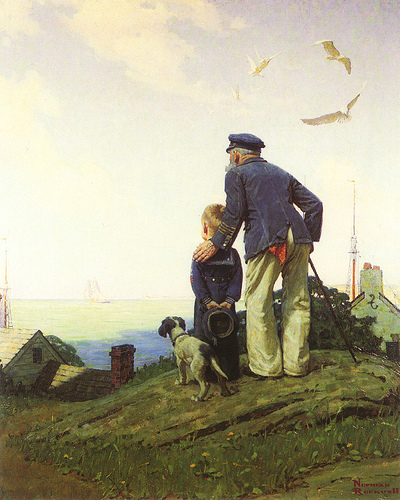Antique Map of Nova Scotia and Newfoundland
Michele B. Moon invites you to take a look at her first historical novel, Pushthrough — based upon a true story set upon the British Commonwealth, Pushthrough, Newfoundland during the reign of King George V, “the Sailor King,” as told from a young dory fisherman’s point of view.
This novel is historically accurate/borderline non-fiction: capturing the height of The British Empire during the rise of industrialization and respectability of its subjects, written with the sophisticated reader in mind. There are political, religious, and literary undertones of the day rolled into the ebb and flow of the tides, as you read and see the sea unfold.
Unknown Artist’s Rendition of Pushthrough, Newfoundland, circa 1927
Introducing her Maiden Voyage:
Catch the Wave of Pushthrough
“It was cod that first lured the English to the great rock of the North Atlantic; it was capelin, the fish that lured the whale.”
(From Chapter Three: “Legend of the Whale”)
*Please take a moment and look at this artistic representation of Pushthrough which I created, depicting this British town by the sea.
“The Ancient spirit is not dead;
Old times, thought I, are breathing there;
Proud was I that my country bred.
Such strength, a dignity so fair…” (1)
William Wordsworth: 1802, The Sailor’s Mother
(From Pushthrough’s Preface)
Norman Rockwell’s, “Looking Out to Sea”, 1927
Pushthrough, A Maritime Historical Novel, is coincidentally written during the same era as Julian Fellowes’ Downton Abbey; and Titanic met her tragic fate not far from the coast of this little town. Through my writing, I am representing a respectable British people from a bygone era, which simply lived in houses built by the beautiful yet treacherous sea:
“A special meal was prepared, served within the dining room, linens and all. Even in December, Mother’s red geraniums bloomed inside the house in pots upon the white window sills, in celebration of William’s return. ‘Red’ bloomed for the British soldiers, known formally as the Redcoats, and red for the cross of the British crusades.”
(From Chapter Eight: “William’s Return”)




